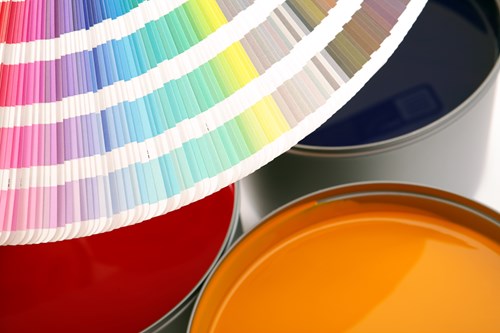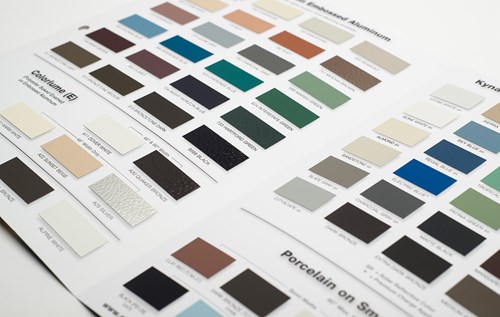
How good will my color matches be?
When we talk about color matching, there are visual matches – differences that can be detected by the human eye or computer matches – how close two colors are using instruments. We use Delta E to express how close the colors match.
What Is Delta E and what should I know for color selling tools?
The simplified answer is that Delta E is the difference between colors. Having a high Delta E means two colors will look completely different to the human eye whereas a low Delta E will be very difficult for the eye to see the difference.
Color values are determined by a mathematical formula – LAB coordinates ( L= Lightness and Darkness, A= Red and Green, B = Yellow and Blue). Delta E is the line distance between two colors expressed with LAB coordinates.
Factors that can lead to Delta E or color variance from a standard in production include temperature of coating process, speed of coating line, general atmospheric conditions, substrate variances, millage, transparency, sheen/gloss, texture and product characteristics. In addition, the human eye is more likely to pick up the Delta E on lighter colors than dark.
Color sheets for color selling tools (color cards, fan decks) are normally held to a standard of 0.5 Delta E from the customer’s approval. Colors are sampled and read during the production process.
Color matches for color standards are held to within 0.2 Delta E and are read individually post coating or spraying.
It is also worth mentioning that there is usually a small variance reading the same standard on different color measuring instruments even if fully calibrated.
As you can understand, the tighter the color match – the lower the Delta E, the more expensive the match becomes.
Building an understanding of what type of color match and tolerance is needed for the project is crucial for both customers and suppliers. You can specify how close the match needs to be for your project. Our color lab is always ready to discuss color matching with you!





